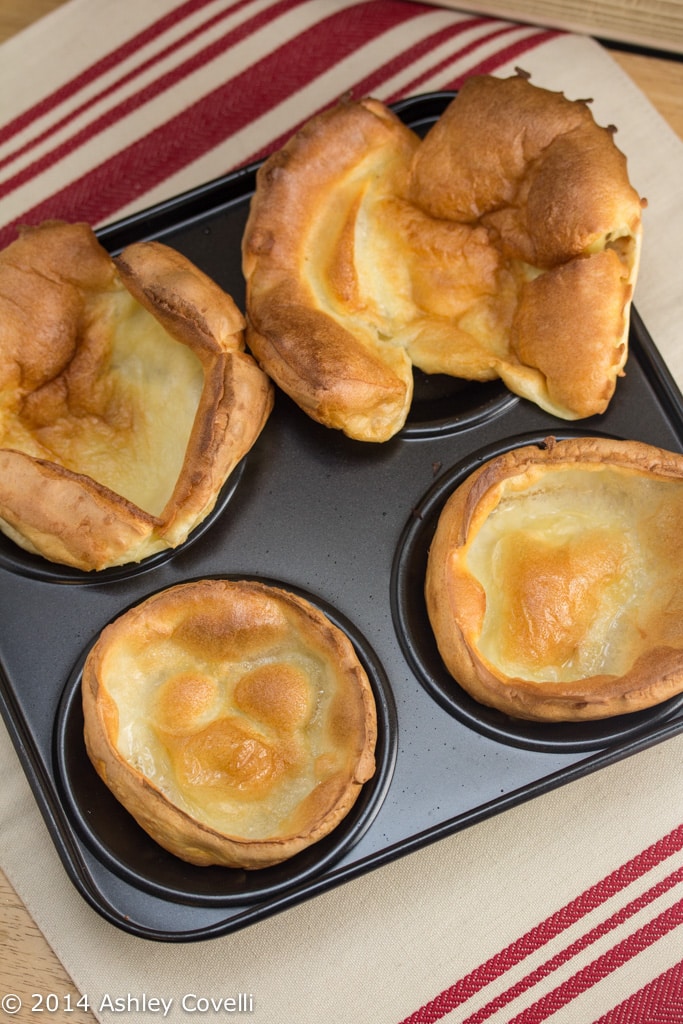
The Best Yorkshire Pudding
About.com
video http://video.about.com/britishfood/Yorkshire-Puddings.htm
Serves 6
4 large, fresh eggs, measured into a jug
Equal quantity of milk to your measured eggs
Equal quantity of all purpose/plain flour to measured eggs
Pinch of salt
2 tbsp lard, beef dripping or vegetable oil
Heat the oven to the highest temperature possible, however, do not exceed 230°C / 450°F or the fat may burn.
Pour the eggs and milk into a large mixing bowl and add the pinch of salt. Whisk thoroughly with an electric hand beater or hand whisk. Leave to stand for 10 minutes.
Gradually sieve the same volume of flour (as the eggs) into the milk and egg mixture, again using an electric hand beater or hand-whisk to create a lump free batter resembling thick cream, if there are any lumps pass the batter through a fine sieve.
Leave the batter to rest in the kitchen for a minimum of 30 minutes, longer if possible – up to several hours.
Place a pea-sized piece of lard, dripping or ½ tsp vegetable oil into your chosenYorkshire pudding tin, or a 4 x 2″/5cm hole tin or 12-hole muffin tin and heat in the oven until the fat is smoking. Give the batter another good whisk adding 2 tbsps of cold water and fill a third of each section of the tin with batter and return quickly to the oven.
Leave to cook until golden brown approx 20 minutes. Repeat the last step again until all the batter is used up.
Serving Yorkshire Pudding
In Yorkshire serving the pudding is traditionally with gravy as a starter dish followed by the meat and vegetables. More often smaller puddings cooked in muffin tins are served alongside meat and vegetables.
Yorkshire pudding isn’t reserved only for Sunday lunch. A large pudding filled with a meaty stew or chili is a dish in its own right.
Cold left-over Yorkshire Puddings make a lovely snack with a little jam or honey.
Yorkshire Puddings do not reheat well, becoming brittle and dry.
